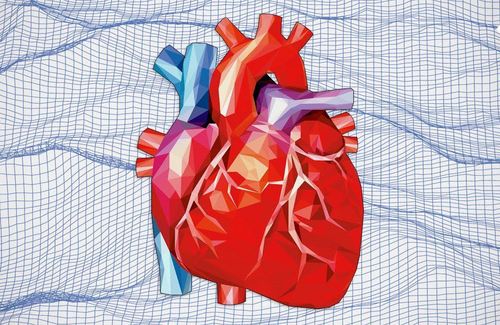This is an automatically translated article.
The article was professionally consulted by Dr. Nguyen Van Duong - Interventional Cardiologist - Cardiovascular Center - Vinmec Central Park International General Hospital.The coronary arteries are the system that supplies blood to the heart muscle. Coronary artery diseases such as myocardial infarction, angina, ... can seriously affect the health of patients. Understanding coronary artery disease and coronary artery disease will help patients detect, prevent and treat the disease more effectively.
1. What is coronary artery?
In order for the heart muscle to function properly, like other organs in the body, the heart muscle needs an adequate supply of oxygen-rich blood. Blood is supplied to the heart muscle through a system of coronary arteries.So how is the coronary artery different from the aorta? The aorta is the largest artery in the body, responsible for bringing blood from the heart to the entire body. The aorta consists of the thoracic aorta and the abdominal aorta. The coronary artery is a branch of the thoracic aorta.
2. Role of coronary arteries
The coronary arteries are a system of blood vessels whose main function is to supply oxygen-rich blood to the heart muscle for the heart to function properly.The coronary system consists of the left coronary artery and the right coronary artery. These arterial branches arise from the base of the aorta, in the sinuses of Valsalva, and run over the surface of the heart. After that, they continue to divide into smaller branches such as septal branch, cross branch, border branch, ... that carry oxygen-rich blood from the aorta to nourish all structures in the heart. The heart is responsible for pumping blood to the whole body, maintaining the normal functioning of the organs.
3. Common diseases in coronary arteries
To function properly, the heart muscle needs energy and oxygen from the coronary arteries. Coronary artery disease occurs when one or more branches of the coronary arteries are narrowed or blocked (mainly due to atherosclerotic plaque), causing reduced blood flow from the coronary arteries to the heart muscle, unable to meet the body's oxygen needs. heart. When a coronary artery is narrowed by 70% or more of its lumen diameter, symptoms of coronary artery disease will appear.So is coronary heart disease dangerous? Depending on the type of coronary artery disease, the level of danger will vary. Common coronary artery diseases are:
3.1. Angina pain

Stable angina is caused by atherosclerotic plaque causing narrowing of the coronary artery lumen. strength and decreases when the patient rests. Stable angina is usually associated with stable atherosclerotic plaque and is less likely to have dangerous complications. Unstable angina occurs when atherosclerotic plaques in the coronary arteries crack or rupture, causing the patient to experience pain at any time, the pain is severe and long, pain even at rest. This pain is related to the instability of the coronary atherosclerotic plaque. Unstable angina is very dangerous because if not treated promptly, it can turn into a heart attack or even sudden death.
3.2. Heart attack
Myocardial infarction is a condition in which a coronary artery becomes completely blocked quickly, causing necrosis of the heart muscle that is not supplied with blood. The mechanism of myocardial infarction is due to the rupture of the atherosclerotic plaque and the complete occlusion of the coronary artery by thrombosis. The outcome of a myocardial infarction will depend on the extent of the infarct area. The larger the area of dead myocardium, the more impaired cardiac function. This is one of the most common causes of heart failure.Coronary arteries play an extremely important role in the body. Many diseases can arise on the coronary arteries that will have a significant impact on health. Therefore, you need to periodically check your health to screen for coronary artery disease, timely detect the disease and have the best treatment plan.
Please dial HOTLINE for more information or register for an appointment HERE. Download MyVinmec app to make appointments faster and to manage your bookings easily.














